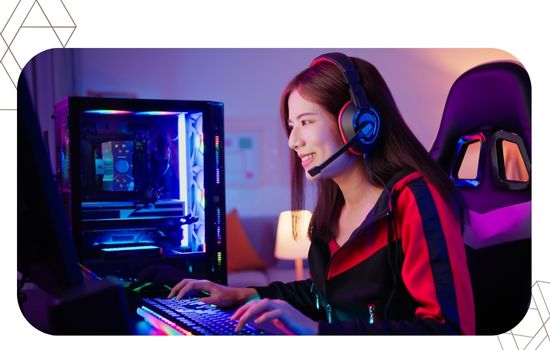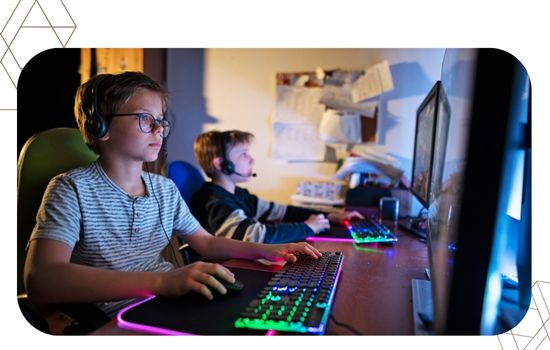Advertisements
Talk about Differences between Western and Japanese RPGs It is about delving into two ways of understanding narrative, culture, and identity within the world of video games.

Both styles share common roots in classic tabletop role-playing games, but have evolved along such different paths that today they represent opposing creative philosophies.
In this article you will learn how these differences were formed, what characterizes each trend, which titles are the most influential, and where RPGs are headed in 2025 in the midst of the era of artificial intelligence and personalized experiences.
Summary
- Origin and cultural context of each style
- Narrative philosophy and character design
- Combat and progression systems
- Player experience and freedom of choice
- Representative examples and their impact
- Current trends and future of the genre
- Frequently Asked Questions
Two worlds, two visions: the origin of the differences
The Differences between Western and Japanese RPGs They arise from the cultural contexts that shaped each type of game.
In the West, RPGs were directly inspired by Dungeons & Dragons (1974), where imagination, decision-making, and freedom were at the core of the experience.
Advertisements
In contrast, in Japan, the adaptation of the format was mixed with the emotional narrative of manga and anime, resulting in more linear stories focused on the personal development of the protagonists.
While Western developers sought to recreate realistic and ethically complex worlds, the Japanese favored symbolic worlds where heroism and sacrifice carried more moral weight.
That philosophical difference remains evident today.
According to Statista (2024), Japanese RPGs accounted for 271% of the Asian video game market, while Western RPGs dominated in North America and Europe with a 34%.
The figures reflect not only cultural preferences, but also different ways of understanding interactive storytelling.
Narrative philosophy and character design
The heart of the Differences between Western and Japanese RPGs It's in the way he tells stories.
In Western RPGs, the narrative is usually open-ended, with multiple endings and moral choices.
The player shapes their story through choices; each game can be unique.
Titles like The Witcher 3: Wild Hunt either Skyrim These are examples of that narrative freedom where actions have tangible consequences.
On the other hand, Japanese RPGs, such as Final Fantasy either Person 5They prefer carefully written plots with a predefined protagonist and an emotional message.
The player accompanies the story rather than modifying it, allowing the exploration of themes such as friendship, loss, or redemption with literary intensity.
While Western studies prioritize immersion and freedom, Japanese studies focus on emotion and symbolism.
It is, in essence, the difference between live a story and witness a legend.
Combat and progression systems
Combat design is another area where the Differences between Western and Japanese RPGs They are obvious.
Western RPGs usually opt for real-time systems, which are more dynamic and strategic, where reflexes and exploration are as important as character development.
In contrast, the Japanese prefer turn-based or semi-automatic mechanics that allow for planning each move and emphasize tactics over direct action.
The following table summarizes the main differences:
| Element | Western RPG | Japanese RPG |
|---|---|---|
| Combat | Real-time, immersive | By turns or hybrid |
| Protagonist | Customizable | Defined by history |
| Narrative | Non-linear, decision-based | Linear, guided, and emotional |
| Visual style | Realism and medieval or futuristic setting | Anime or fantasy aesthetic |
| Approach | Player's freedom | Character development |
Both models have learned from each other.
Today, many hybrid titles combine the best of both worlds, such as Final Fantasy XVI, which adopted a more agile fighting style, or Starfield, which includes more cinematic storylines.

Read more: Soccer games: the passion for sports in digital format
Player experience and freedom of choice
The way the player experiences the story is perhaps the clearest line that divides both styles.
In Western RPGs, the aim is for every decision to have a direct impact.
From the character's appearance to the fate of entire civilizations, everything depends on the player's moral choices.
This approach generates a sense of authorship: the player He doesn't follow a script, he writes it..
In contrast, Japanese RPGs are more like an interactive novel.
Although player participation is important, the emphasis is on the predetermined story, the relationship between the characters, and the emotional arc.
It's not about deciding the course, but about connect emotionally with the protagonists.
A clear analogy would be the difference between an open adventure book where the reader chooses the ending and a carefully written film where every scene has a precise emotional intention.
Representative examples and cultural impact
Few comparisons illustrate the Differences between Western and Japanese RPGs as two iconic works:
The Elder Scrolls V: Skyrim and Persona 5 Royal.
In SkyrimThe player can completely ignore the main mission and dedicate themselves to hunting dragons, exploring mountains, or becoming a legendary thief.
The story adapts to every decision, without limits.
In Person 5On the contrary, the script is carefully designed so that the player feels the psychological evolution of the characters.
Ethical dilemmas, human relationships, and social criticism are explored through a structured narrative.
Both examples show how each culture understands entertainment: Westerners seek total freedom, the Japanese pursue a guided emotional connection.
Neither is "better"; they simply reflect different values.
Current trends and future of the genre
In 2025, the boundaries between Western and Japanese RPGs begin to blur.
Major developers are integrating artificial intelligence and machine learning to create more reactive stories, where secondary characters remember past decisions or generate personalized dialogues.
AI does not replace human storytelling, but it amplifies it.
Studios like CD Projekt Red and Square Enix experiment with dynamic narrative systems that combine Western freedom with Japanese emotional depth.
Furthermore, the expansion of inclusive role It is redefining both styles:
More cultural diversity, complex female protagonists, and more realistic representations of society.
The rise of cloud-powered, narrative-driven multiplayer role-playing games is also transforming the experience.
Today, a player in Mexico can share a story with another in Japan in real time, creating a cultural bridge between both philosophies.
Towards total convergence?
One question inevitably arises: will they continue to exist? Differences between Western and Japanese RPGs Or are we facing a creative fusion?
Everything indicates that both styles are feeding off each other.
Japanese developers incorporate open mechanics, while Western developers adopt more personal narratives.
However, the cultural roots remain.
Japanese RPGs will continue to prioritize emotion, symbolism, and existential themes; Western RPGs will maintain their focus on freedom, ethics, and world-building.
That duality, more than a division, has become the force that keeps the genre alive.
In other words, while one looks into the soul, the other observes the universe.
Conclusion
Understanding the Differences between Western and Japanese RPGs It is about understanding how culture influences the way stories are told.
The West offers control, freedom, and variable morality; Japan offers structure, emotion, and reflection.
Both paths lead to the same end: allowing the player to recognize themselves through their character's journey.
In a world where technology is advancing and narratives are becoming more human, the future of RPGs lies not in choosing one style, but in celebrating the diversity of ways in which stories can be experienced.
Read more: Role-playing games (RPGs): fantasy worlds and deep narratives
Frequently Asked Questions about the Differences between Western and Japanese RPGs
1. What is the main difference between a Western RPG and a Japanese RPG?
Western games prioritize freedom and player customization, while Japanese games focus on linear stories and well-defined protagonists with a strong emotional charge.
2. What type of combat will be most popular in 2025?
Hybrid systems that combine real-time action with turn-based strategy are gaining ground, as they balance dynamism and tactical depth.
3. Why do Japanese RPGs have more influence in Asia?
Because of its connection to manga culture, anime, and emotional storytelling, which resonates more with Eastern audiences.
4. Are Western RPGs adopting Japanese elements?
Yes. More and more studios are incorporating emotional arcs, anime-influenced visual styles, and guided narrative structures.
5. What is the future of the genre?
The integration of artificial intelligence and adaptive storytelling will allow the best of both worlds to be combined, creating unique, personal, and global experiences.